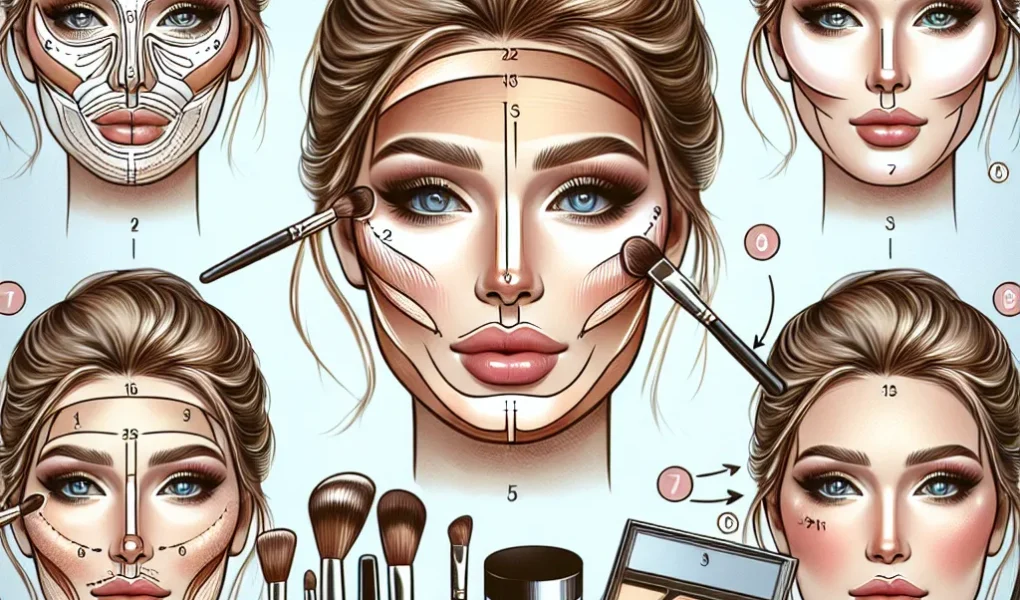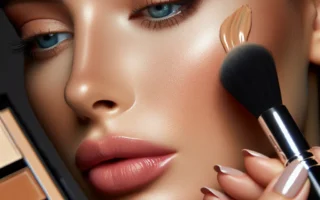Understanding the Basics of Contouring
Understanding the basics of contouring is essential to mastering the art of makeup. One key element of a flawless contour is enhancing the eyes with the best mascara. Finding the best mascara can truly elevate your look and make your eyes pop, complementing the sculpted contours of your face.
Understanding the Basics of Contouring
Understanding the basics of contouring is essential for mastering this popular makeup technique. Contouring involves using darker and lighter shades to enhance the natural structure of the face, creating dimension and definition. The key is to strategically apply these shades to areas where light naturally hits and shadows naturally fall.
The first step in mastering contouring is to identify your face shape. Different face shapes require different contouring techniques. For example, those with round faces may want to contour the outer edges to create the illusion of more angular features, while those with square faces may focus on softening the angles of the jawline and forehead.
Choosing the right contouring products is equally important. Opt for a matte bronzer or contour powder that is a few shades darker than your natural skin tone for the contour shade, and a highlighter that is a few shades lighter for the highlight shade. Cream and powder formulas each have their own advantages, so experiment to find which works best for you.
Once the products are selected, it’s time to start contouring. Using a contour brush, apply the darker shade along the hollows of the cheeks, the temples, and the jawline. Then, blend it out to avoid any harsh lines. Next, apply the lighter shade to the high points of the face, such as the tops of the cheekbones, the bridge of the nose, and the center of the forehead, blending well for a seamless finish.
Understanding these basic principles of contouring is the foundation for achieving a beautifully sculpted look. With practice and experimentation, anyone can master the art of contouring and enhance their natural beauty.
Choosing the Right Contouring Products
Choosing the right products for contouring is crucial for achieving a flawless makeup look. When it comes to contouring, selecting the appropriate products can make or break the final result. The first step in mastering the art of contouring is understanding the different types of products available and how to choose the ones that best suit your skin type and tone.
One of the essential contouring products is a contouring powder or cream. This product should be a few shades darker than your natural skin tone and have a matte finish. It is important to choose a contouring product that blends seamlessly into the skin for a natural-looking shadow effect. For those with oily skin, a powder contour may be preferable, while those with dry skin may lean towards a cream formula for a more hydrating finish.
In addition to a contour product, a complementary highlighter is essential for achieving balance in your contouring. Highlighting products come in various forms, including powders, creams, and liquid illuminators. When selecting a highlighter, consider your skin’s undertones and the level of glow you prefer. Those with cool undertones may opt for a pearl or icy-toned highlighter, while warm undertones may complement well with gold or champagne shades.
It’s also important to invest in quality makeup brushes or sponges specifically designed for contouring. The right tools can make a significant difference in the application and blending of contouring products, ensuring a seamless and natural finish.
In conclusion, choosing the right contouring products, including contouring powders or creams, highlighters, and the appropriate application tools, is essential for mastering the art of contouring. By understanding your skin’s needs and undertones, you can select products that enhance your natural features and achieve a beautifully sculpted look.
Mastering Contouring Techniques
Mastering contouring techniques can elevate your makeup game, sculpting your face to perfection. Understanding the art of contouring involves the mastery of shading and highlighting to enhance your facial features. To begin, choose a matte contour powder or cream that is a few shades darker than your natural skin tone. Utilize this product to create shadows and add depth to your face, focusing on areas such as the hollows of your cheeks, along the jawline, and the sides of the nose. Blending is key to achieving a seamless and natural look, so take your time to blend the contour product thoroughly.
Equally important in mastering contouring techniques is the art of highlighting. Opt for a concealer or highlighter that is a few shades lighter than your skin tone and apply it to the high points of your face, including the tops of your cheekbones, the bridge of your nose, and your cupid’s bow. This technique not only adds luminosity to your complexion but also accentuates your features.
Remember, practice makes perfect when it comes to mastering the art of contouring. Experiment with different products and tools to find what works best for your unique face shape. With time and patience, you can become proficient in contouring, enhancing your natural beauty with skillful shading and highlighting techniques.
Tips for Perfecting Your Contouring Routine
Mastering the art of contouring can seem daunting, but with the right techniques and tips, achieving a flawless contoured look is within reach. If you’re looking to perfect your contouring routine, consider these essential tips.
Firstly, choose the right shade of contour product for your skin tone. Opt for a matte powder or cream that is a few shades darker than your natural skin tone. This will create natural-looking shadows that enhance your facial features.
When applying your contour, remember the key areas to target: the hollows of your cheeks, the temples of your forehead, along the jawline, and the sides of the nose. Blend the product thoroughly using a makeup sponge or brush to avoid any harsh lines and ensure a seamless transition between the contoured areas and your natural skin tone.
It’s crucial to consider your face shape when contouring. Different face shapes may require different contouring techniques. For example, those with a round face may want to focus on creating more angular features, while those with a square face may aim to soften the angles. Understanding your face shape will help you tailor your contouring routine to achieve the most flattering results.
Additionally, lighting plays a significant role in contouring. Take note of the lighting in the spaces where you’ll be spending time, as contouring for daytime may differ from contouring for evening events or photography. Consider using a lighter hand when applying contour for natural daytime lighting and building it up for more dramatic effects in the evening.
Finally, practice makes perfect. Experiment with different techniques and products to find what works best for you. Whether you prefer powder or cream contours, mastering the art of contouring takes time and patience, so don’t be disheartened if it doesn’t look perfect on the first try.
By incorporating these tips into your contouring routine, you’ll be well on your way to achieving a professional-looking contoured finish that enhances your natural beauty.




